1.线程概念
1.什么是线程
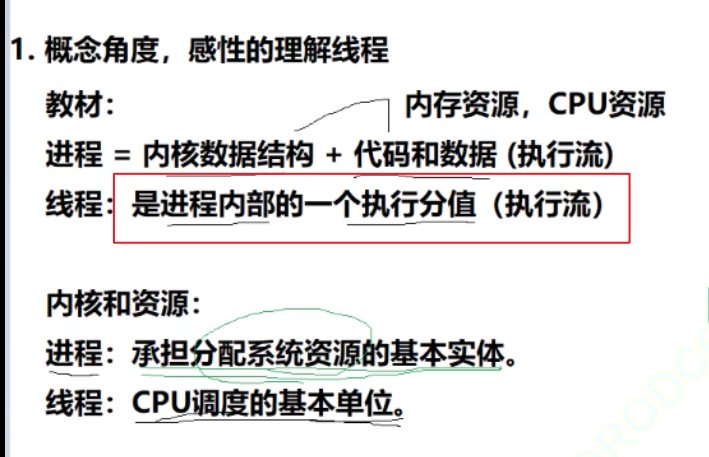
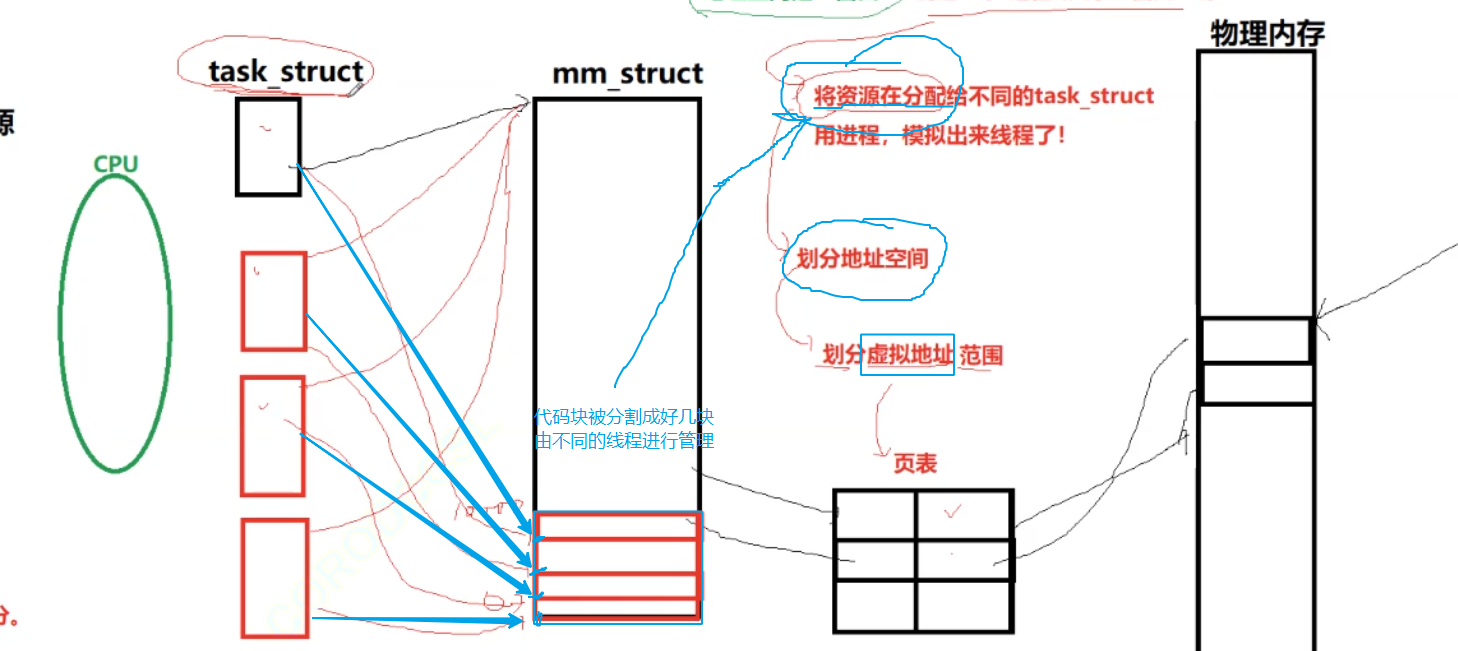

2.线程 vs 进程
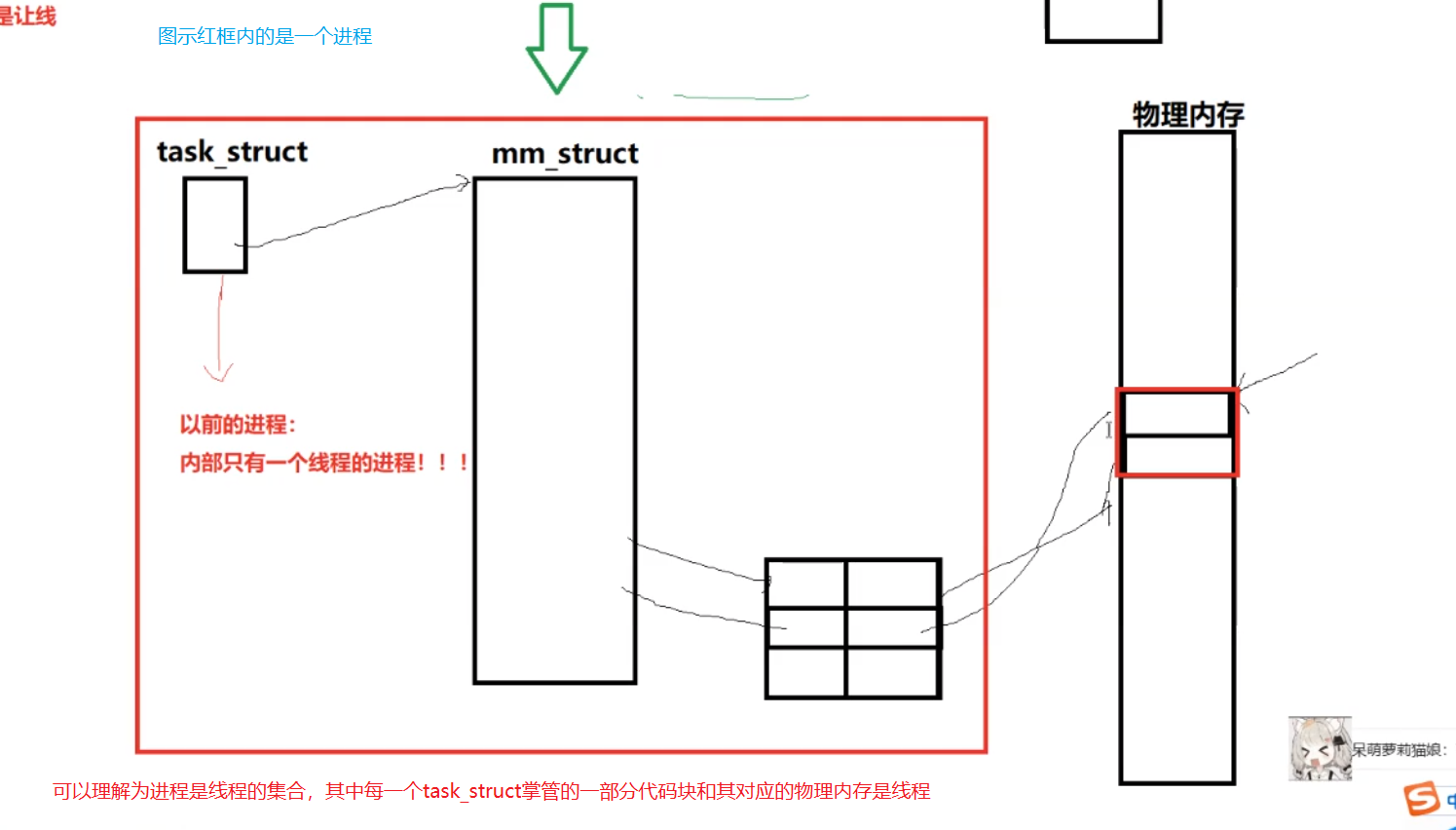
不同的操作系统有不同的实现方式:
- linux :直接使用pcb的功能来模拟线程,不创建新的数据结构
- windows: 使用新的数据结构TCB,来进行实现,一个PCB里有很多个TCB
3.资源划分
详情可见操作系统书籍中的存储器管理和虚拟存储器管理章节!!!!
4.线程理解

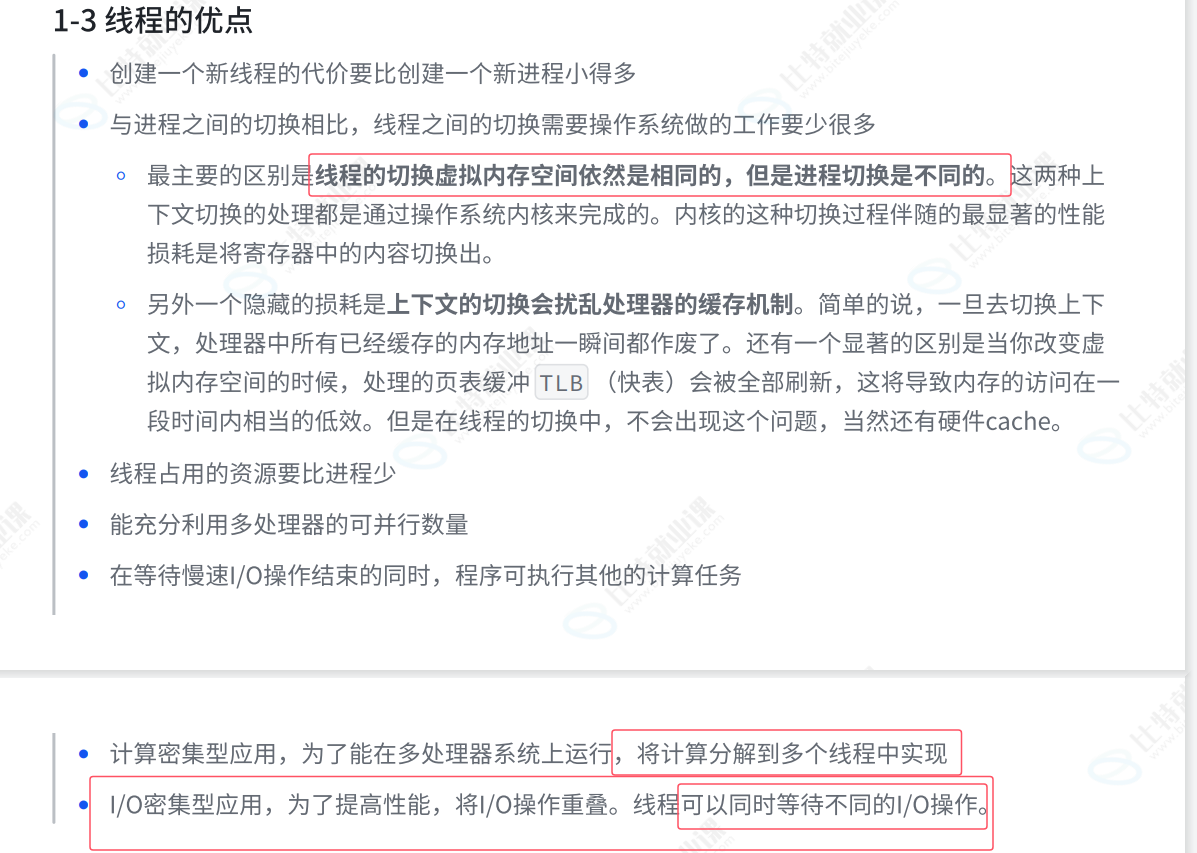
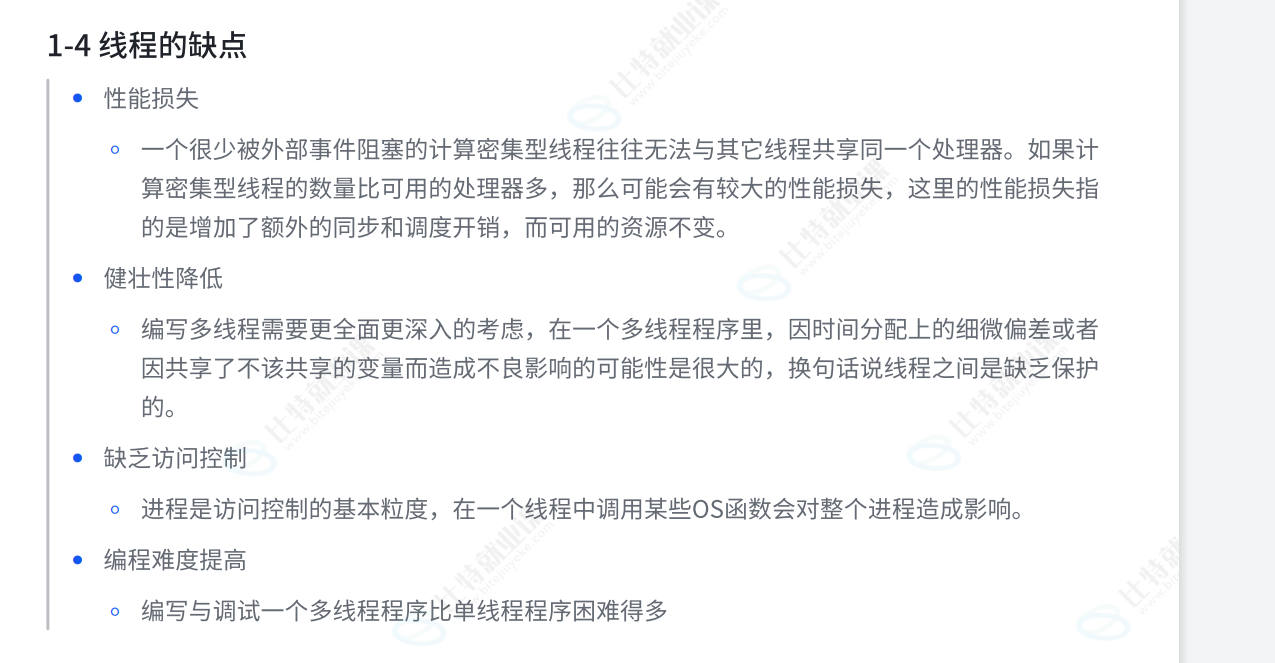
2.线程和进程的区别
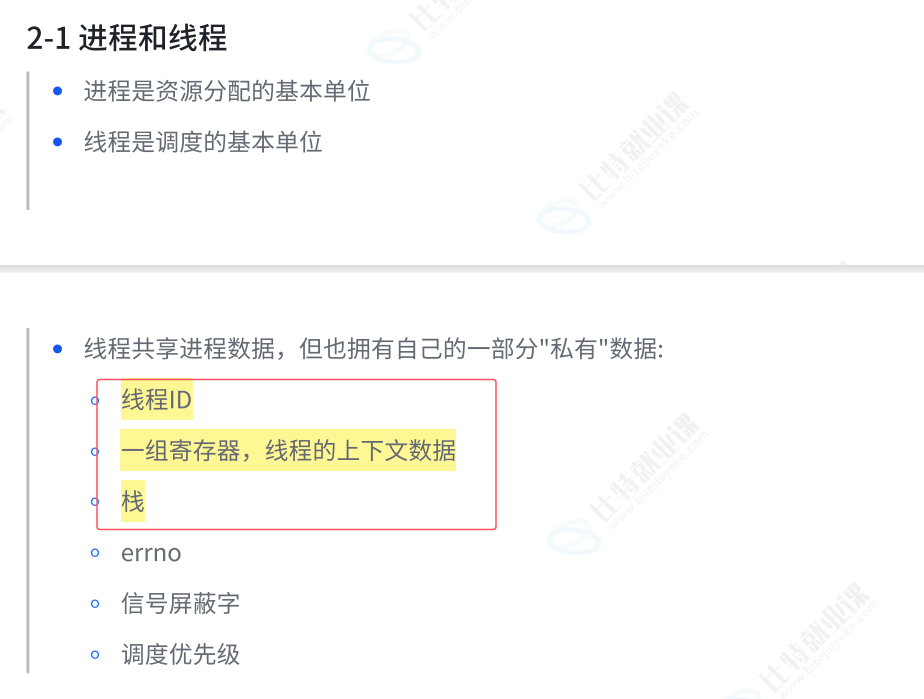
- 黄字代表线程特有的私有数据
- 一组寄存器和上下文数据---------------证明线程是可以被独立调用
- 栈--------------证明线程是动态的
1.进程的线程共享!!!!!!!!!!
同⼀地址空间,因此 Text Segment 、 Data Segment 都是共享的,如果定义⼀个函数,在各线程中都可以调⽤ ,如果定义⼀个全局变量,在各线程中都可以访问到, 除此之外,各线程还共享以下进程资源和环境:
⽂件描述符表 (fd)- 每种信号的处理⽅式(SIG_IGN、SIG_DFL或者⾃定义的信号处理函数)
当前⼯作⽬录⽤⼾id和组id
1.父子进程只有代码段是共享的,但主线程和子线程连地址空间都是共享的,所以他们可以使用共享的函数和全局变量 (意思就是如果子线程的全局变量被修改了,主线程看到的是同一个全局变量,也会变化)
轻松实现类似进程间通信!!!!!!!
2.而全局变量在父子进程中是写实拷贝,子变父不变!!!!!!!!!
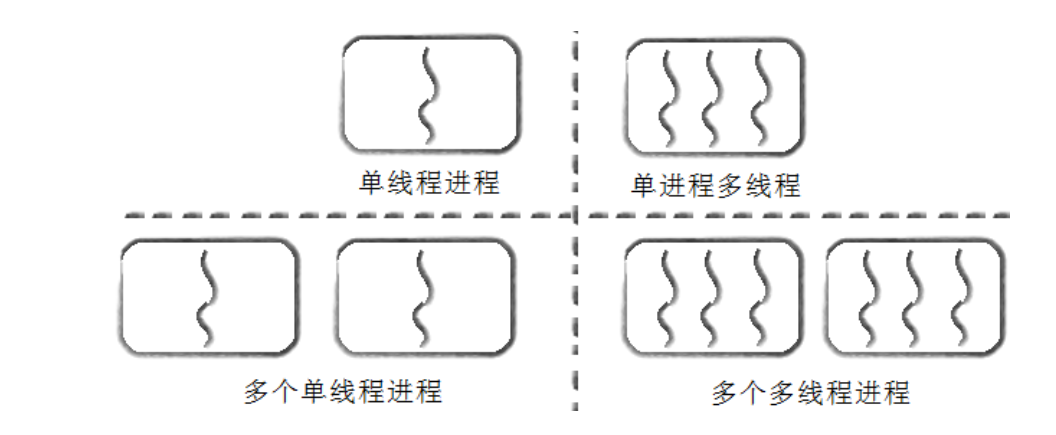
3.linux的线程控制
1.线程创建
创建函数:
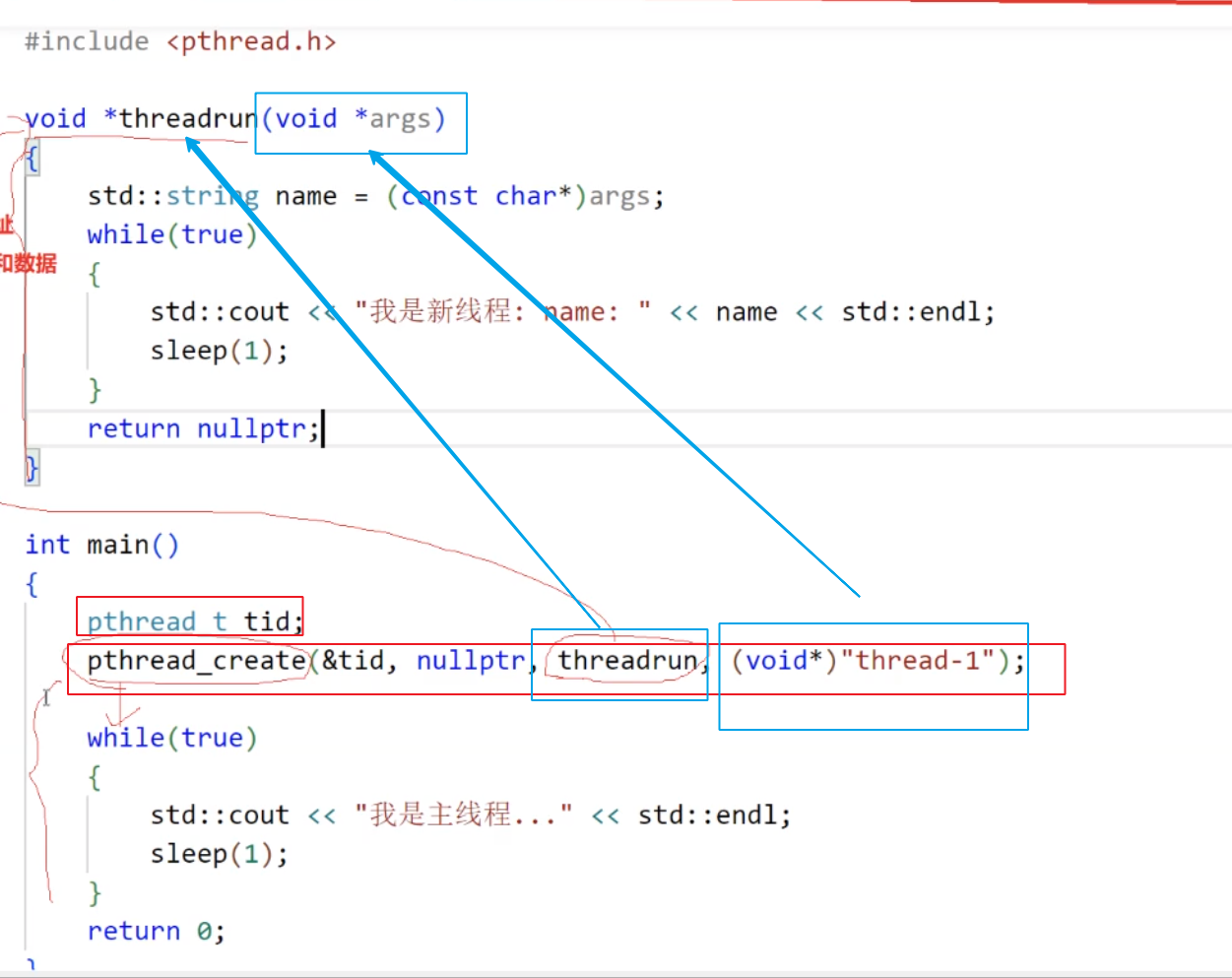
运行后使用 ps - aL指令查看线程
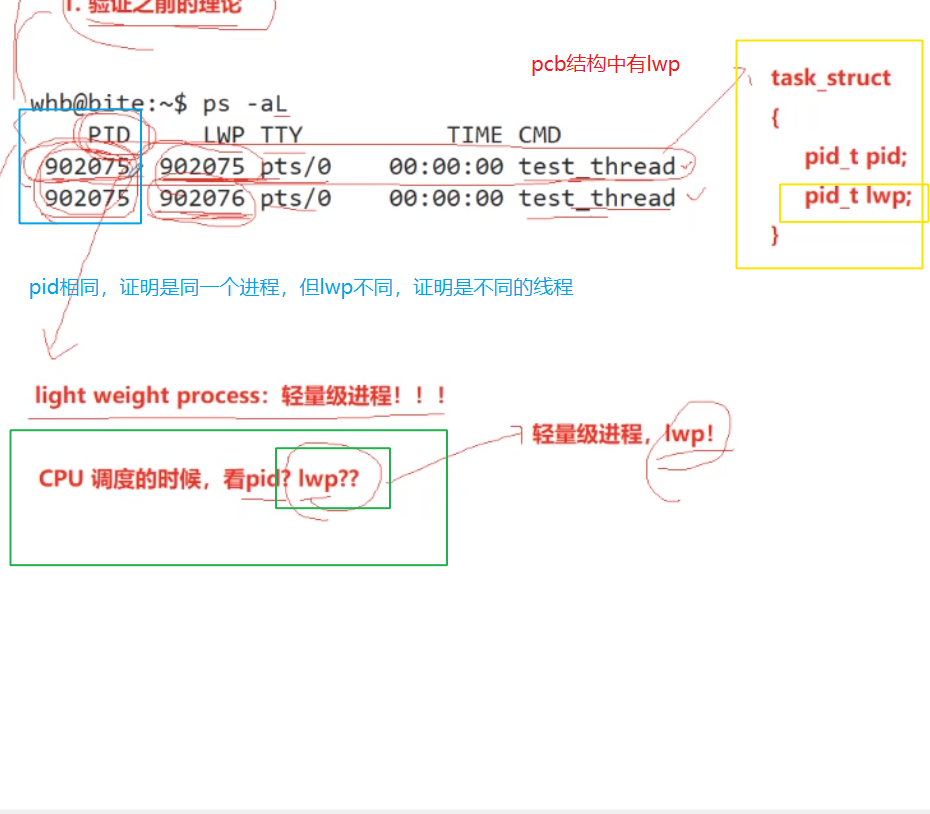
2.pthread库的引入----为什么需要有线程库?
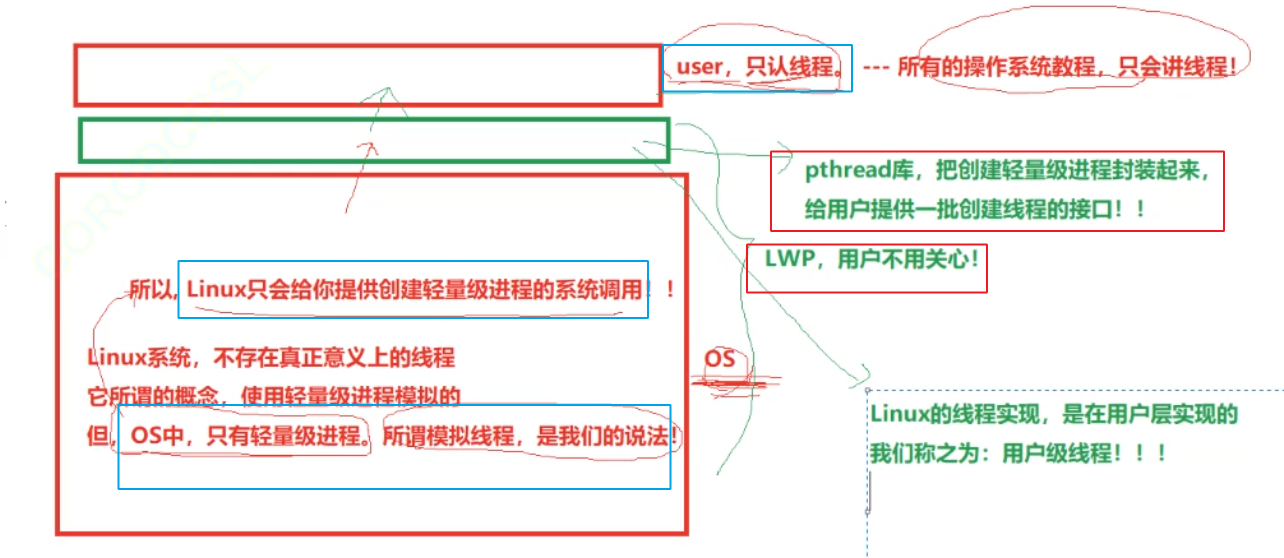
4.pthread库的使用
- 与线程有关的函数构成了⼀个完整的系列,绝⼤多数函数的名字都是“
pthread_”打头的
• 要使⽤这些函数库,要通过引⼊头⽂件<pthread.h>
• 链接这些线程函数库时要使⽤编译器命令的“-lpthread”选项
1.线程创建—pthread_create()

- thread是新线程的标识符,是输出型参数(让主线程获取,便于调用其他函数)
2.线程等待—pthread_join()
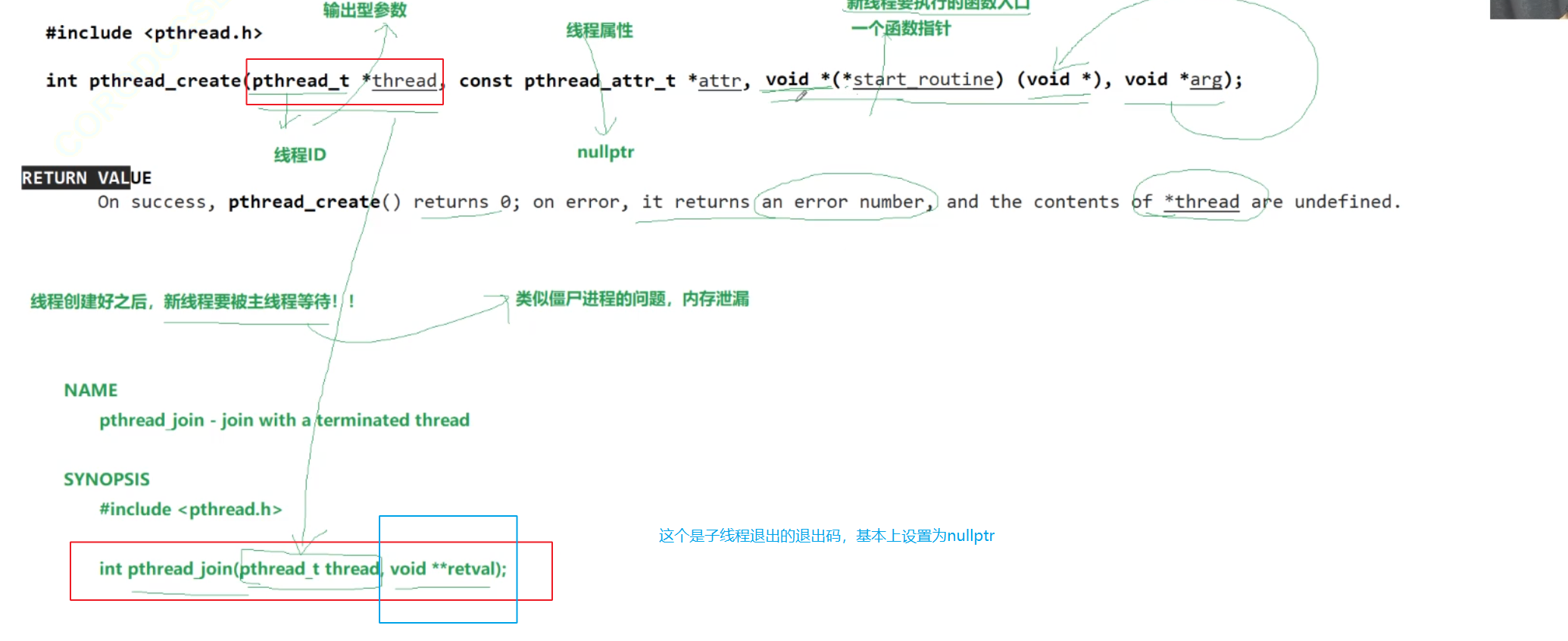
- 这里retval拿到的是子线程的退出码,即子线程函数的返回值,但返回值是void *
- 所以retval的类型应当是void* 的地址类型即void**
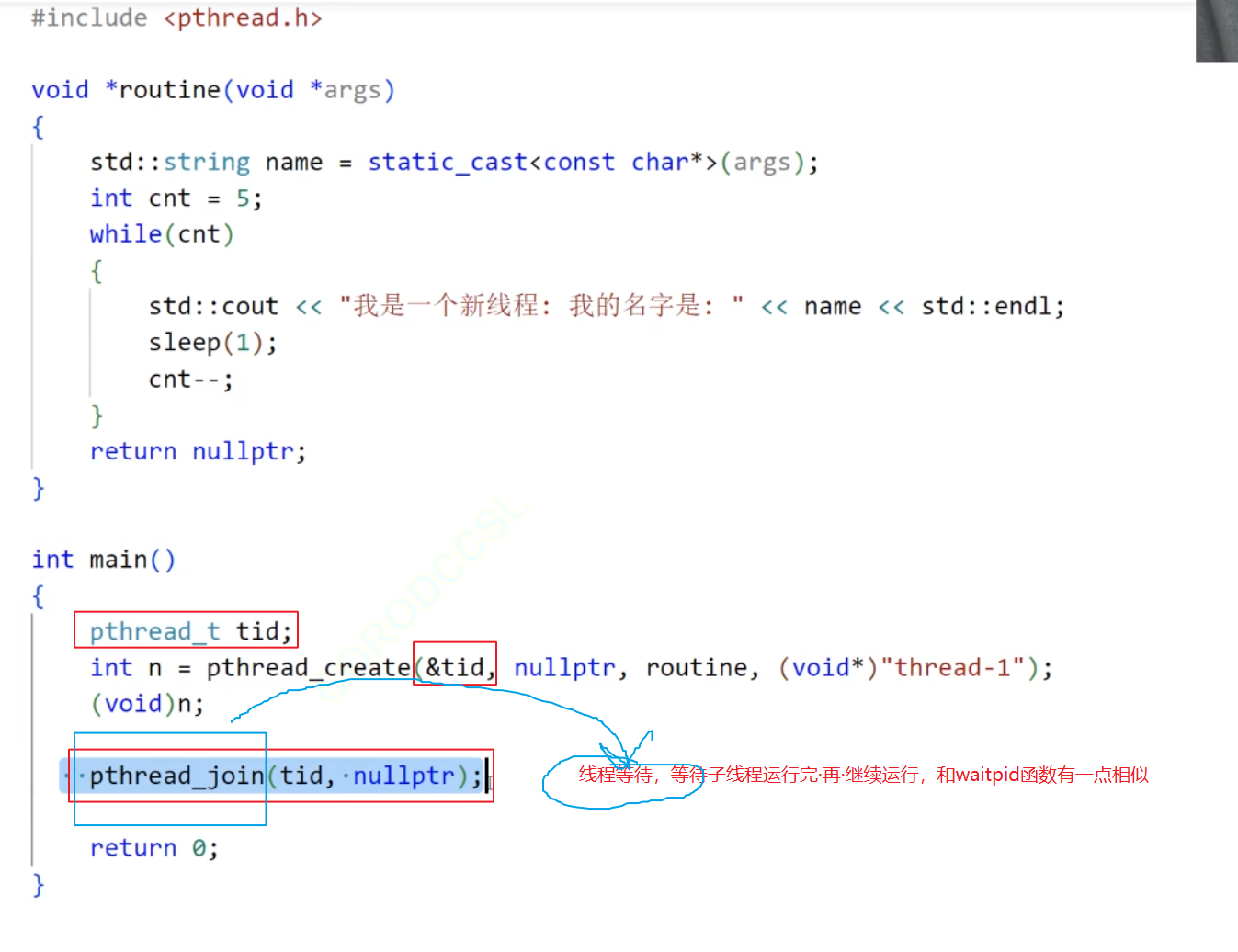
- 其中,routine是子线程的入口函数,routine函数结束的话子线程也就结束了
3.线程取消或终止—pthread_exit()/pthread_cancel()
1-----------------pthread_exit()
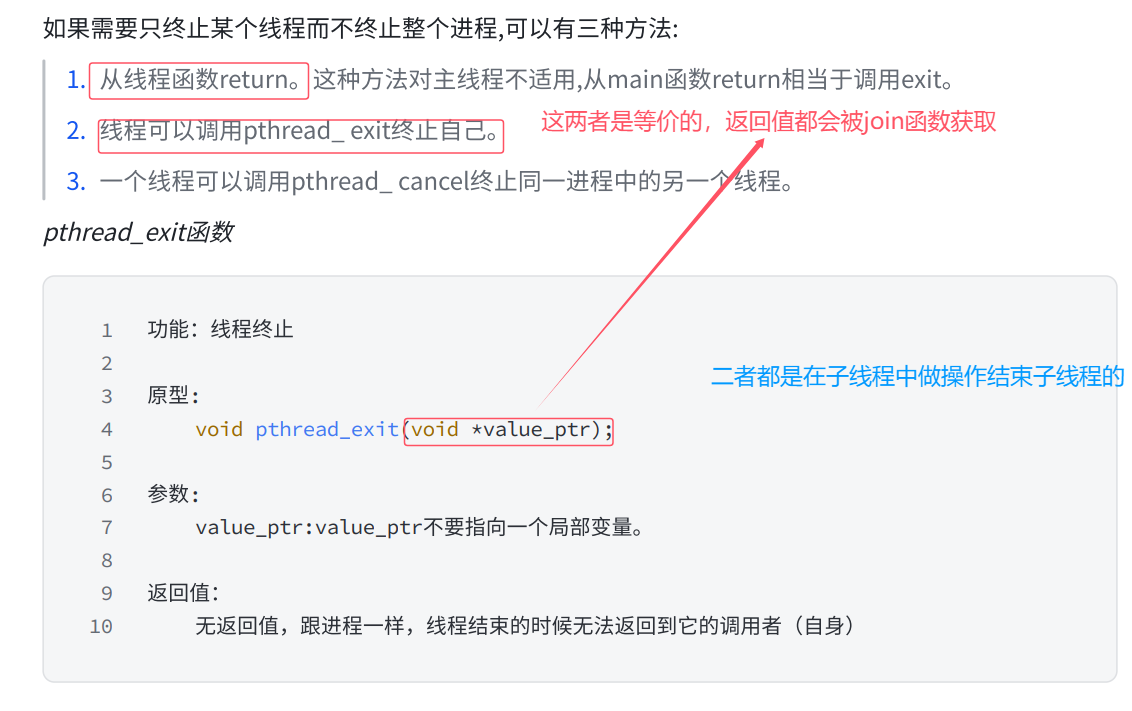
2-----------------pthread_cancel()
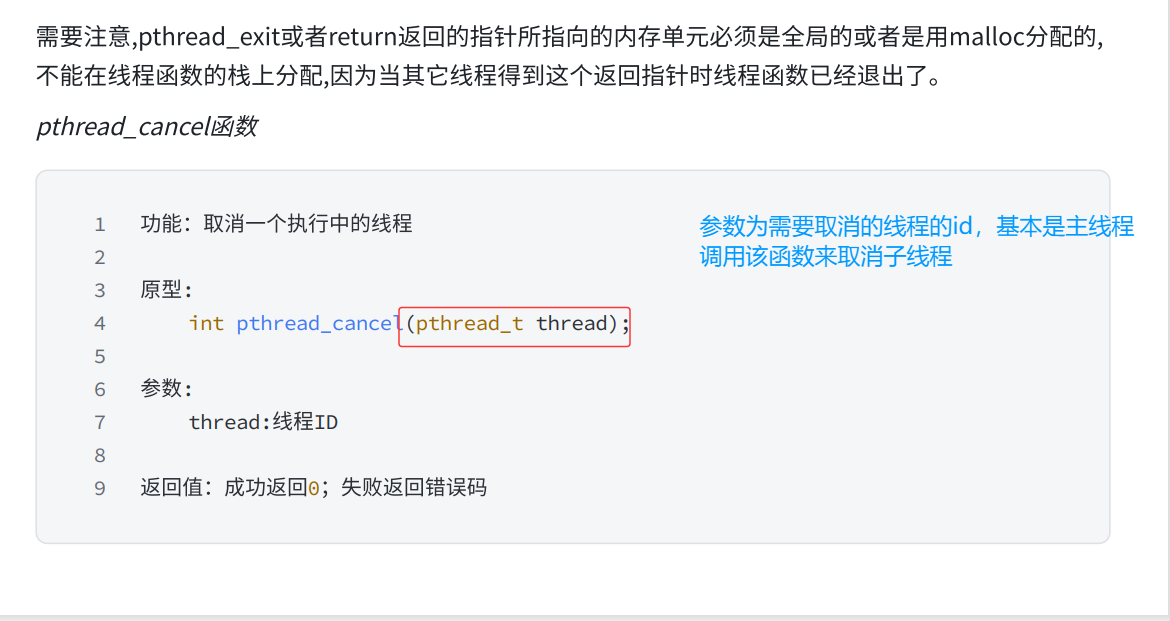
- 如果线程被主线程或其他线程取消,那么主线程join函数得到的返回值固定为-1
4.线程分离—int pthread_detach(pthread_t thread);

5.线程ID及进程地址空间布局
1.--------------------------pthread_self函数获取id
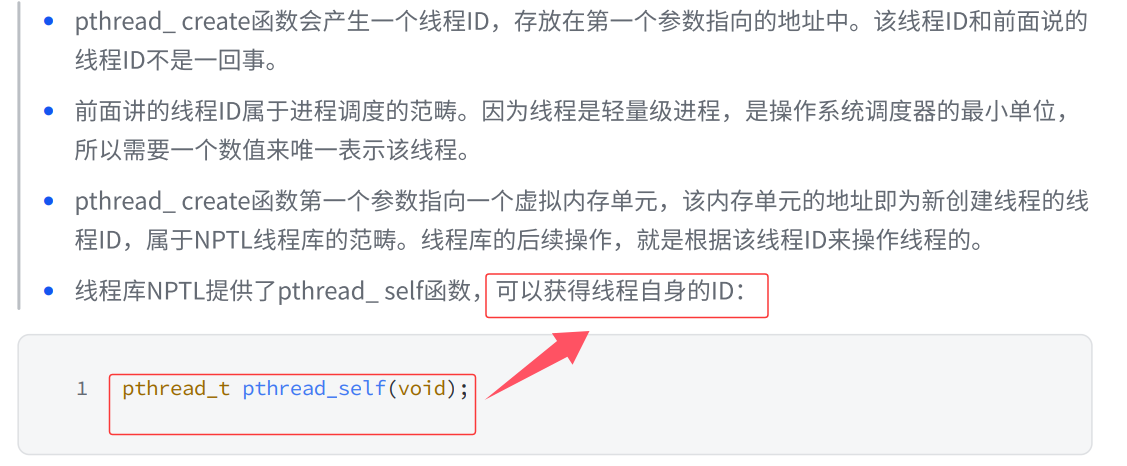
2.--------------------------pthread库的动态链接
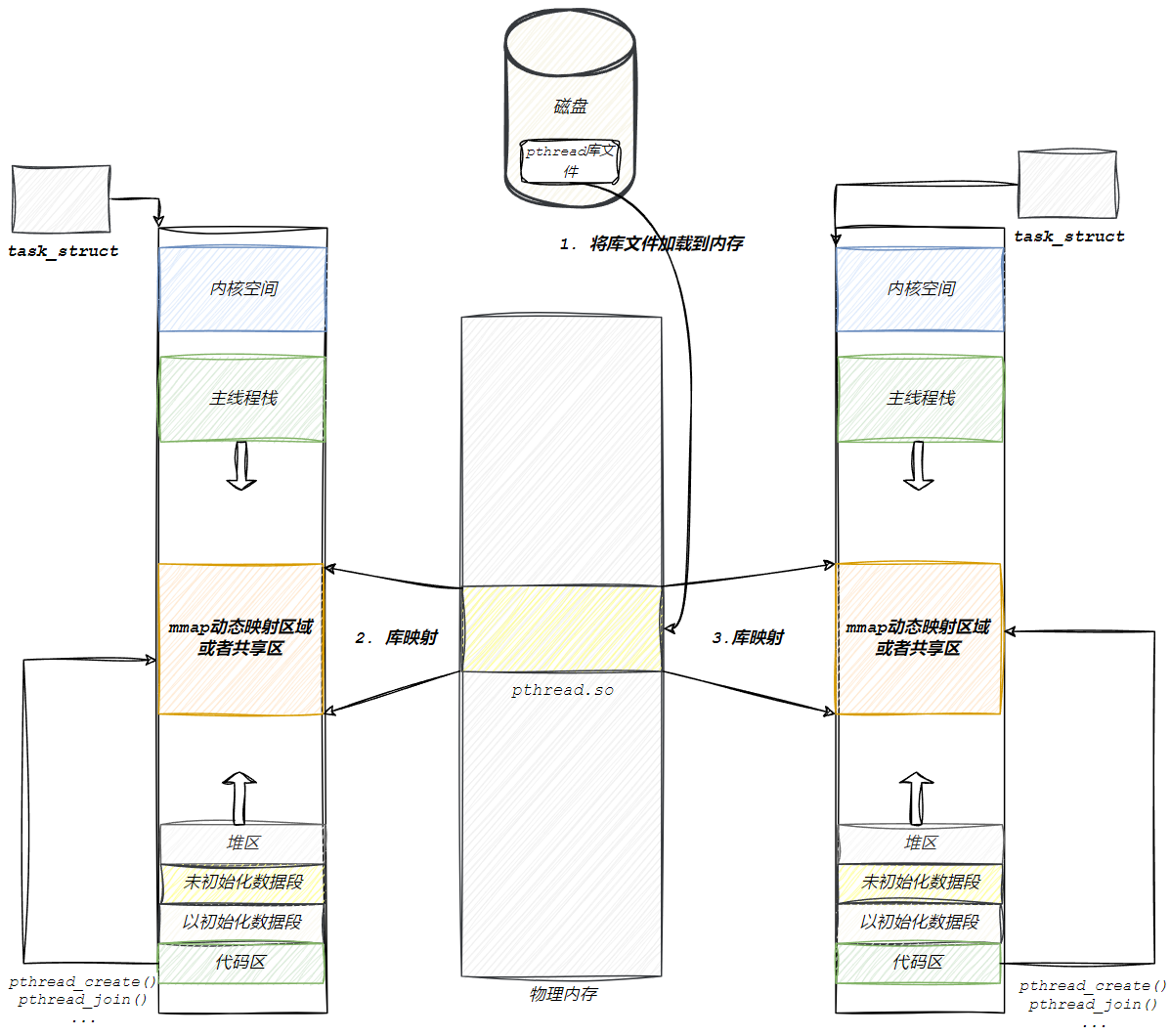
- 所有的线程都是在thread库中建立的,线程的管理块都存储在库中,具体的pcb由用户使用系统调用在内核中建立
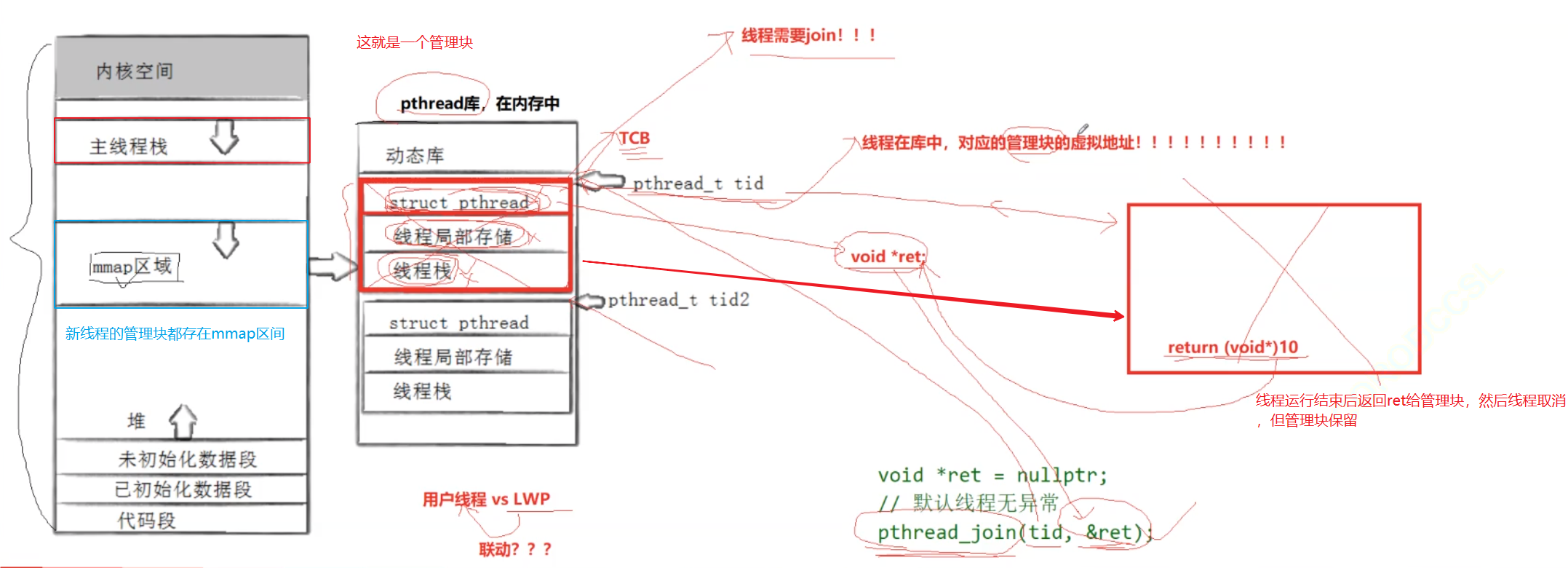
- 创建线程的具体图例
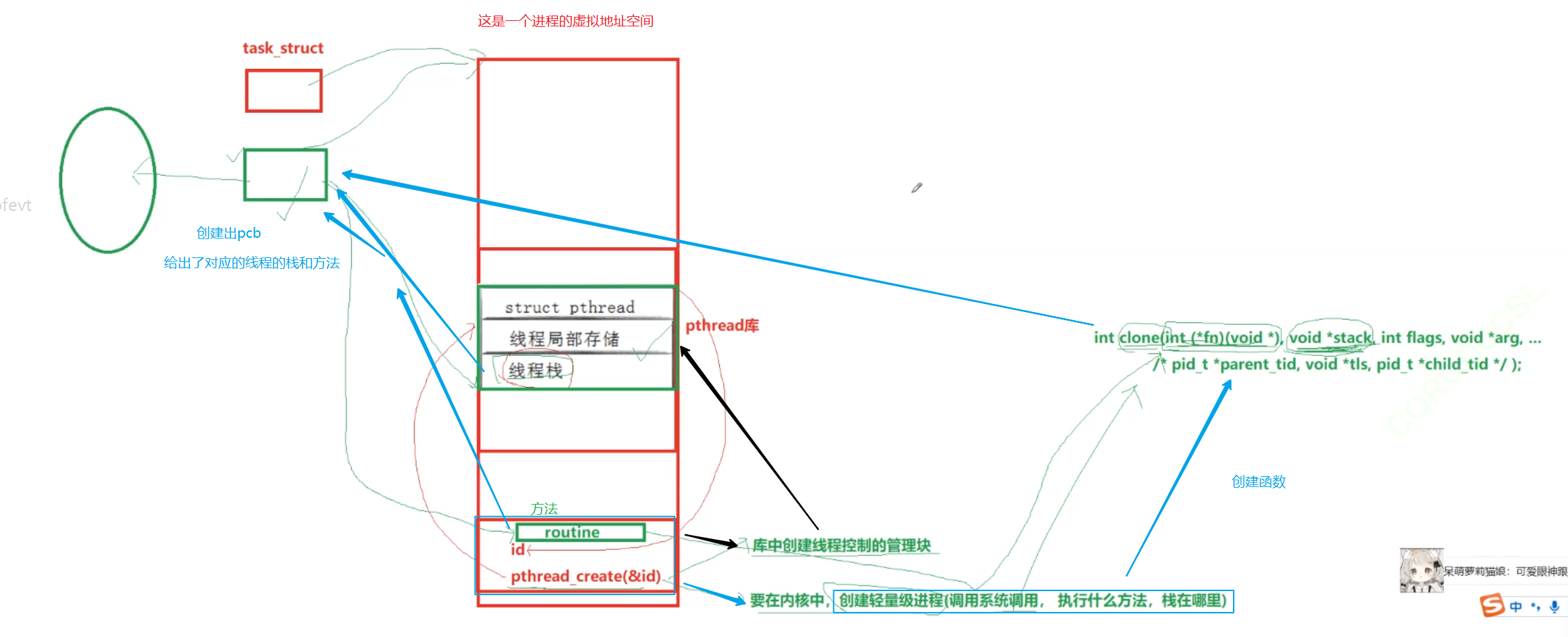
6.线程互斥
来看一个买票的例子:
/ 操作共享变量会有问题的售票系统代码
#include <pthread.h>
#include <stdio.h>
#include <stdlib.h>
#include <string.h>
#include <unistd.h>
int ticket = 100;
void* route(void* arg) {
char* id = (char*)arg;
while (1) {
if (ticket > 0) {
usleep(1000);
printf("%s sells ticket:%d\n", id, ticket);
ticket--;
} else {
break;
}
}
}
int main(void) {
pthread_t t1, t2, t3, t4;
pthread_create(&t1, NULL, route, (void*)"thread 1");
pthread_create(&t2, NULL, route, (void*)"thread 2");
pthread_create(&t3, NULL, route, (void*)"thread 3");
pthread_create(&t4, NULL, route, (void*)"thread 4");
pthread_join(t1, NULL);
pthread_join(t2, NULL);
pthread_join(t3, NULL);
pthread_join(t4, NULL);
}
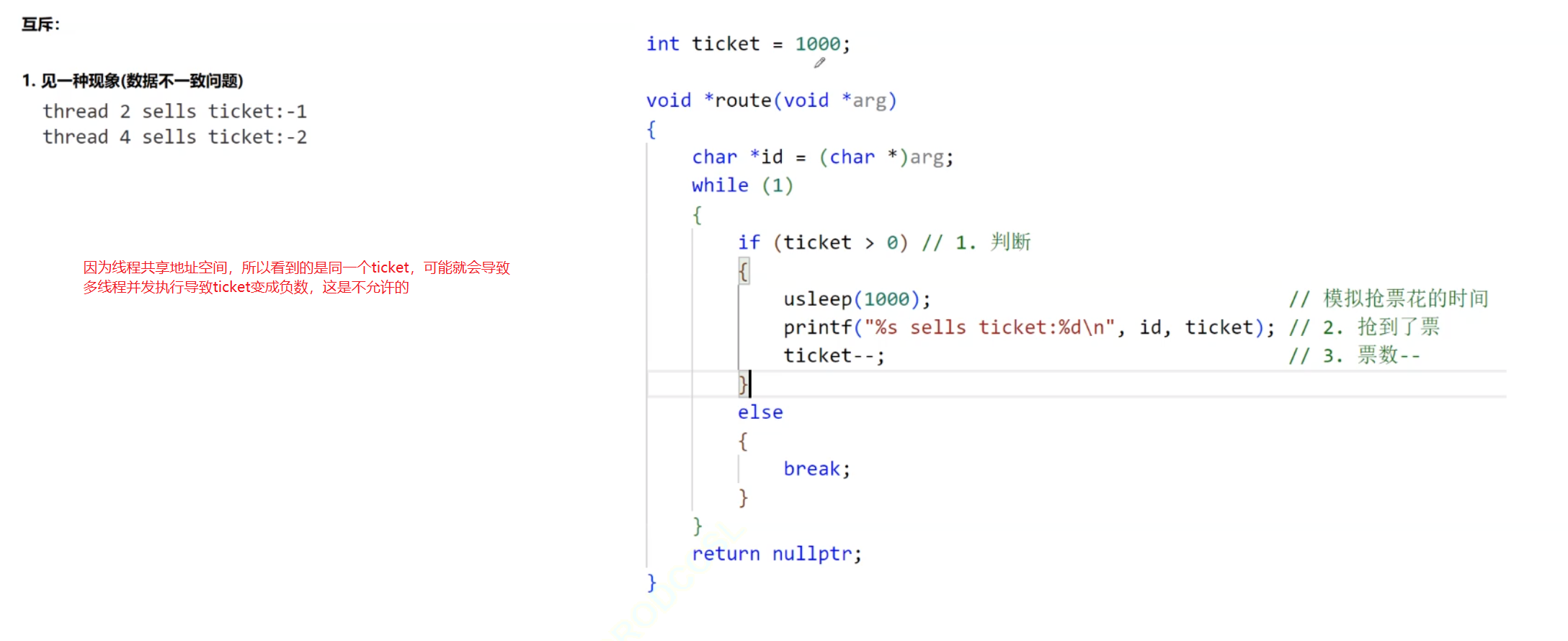
- 为了避免买票变成负数,所以要使用
锁来保证线程间的互斥
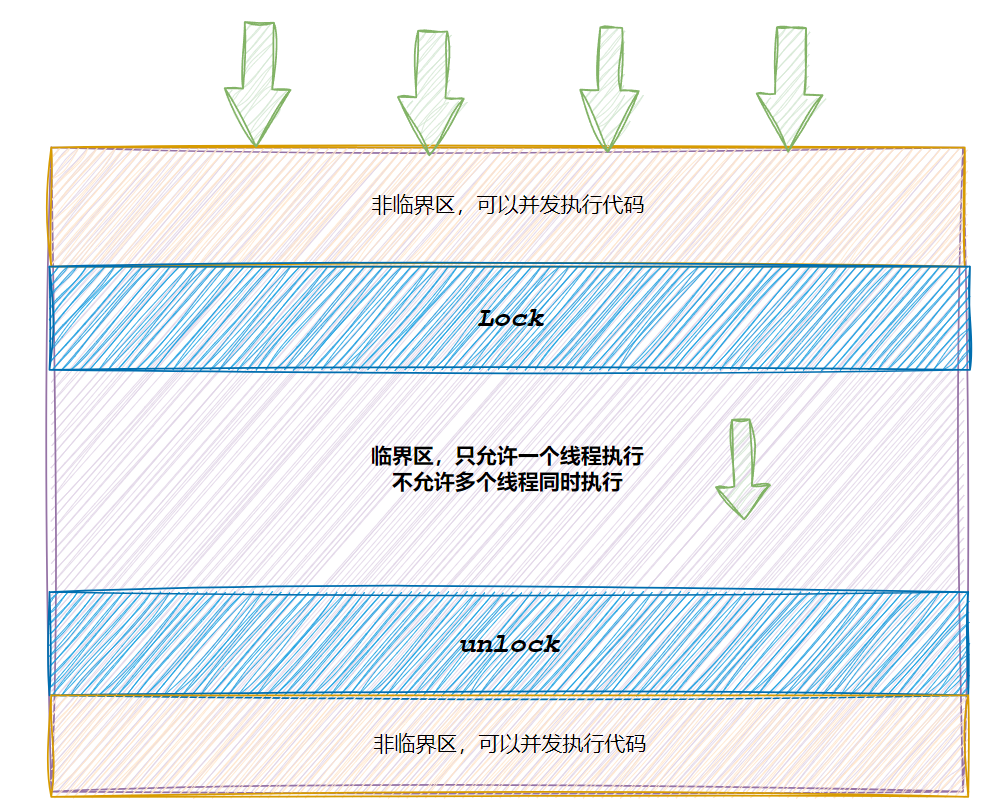
1.锁的使用
#include <pthread.h>
#include <sched.h>
#include <stdio.h>
#include <stdlib.h>
#include <string.h>
#include <unistd.h>
int ticket = 100;
pthread_mutex_t mutex;//设置锁
void* route(void* arg)
{
char* id = (char*)arg;
while (1)
{
pthread_mutex_lock(&mutex);//pthread_mutex_lock--------上锁
if (ticket > 0) {
usleep(1000);
printf("%s sells ticket:%d\n", id, ticket);
ticket--;
pthread_mutex_unlock(&mutex);// pthread_mutex_unlock--------解锁
} else {
pthread_mutex_unlock(&mutex);// pthread_mutex_unlock--------解锁
break;
}
}
return nullptr;
}
int main(void) {
pthread_t t1, t2, t3, t4;
pthread_mutex_init(&mutex, NULL);
pthread_create(&t1, NULL, route, (void*)"thread 1");
pthread_create(&t2, NULL, route, (void*)"thread 2");
pthread_create(&t3, NULL, route, (void*)"thread 3");
pthread_create(&t4, NULL, route, (void*)"thread 4");
pthread_join(t1, NULL);
pthread_join(t2, NULL);
pthread_join(t3, NULL);
pthread_join(t4, NULL);
pthread_mutex_destroy(&mutex);//pthread_mutex_destroy-------删除锁
}